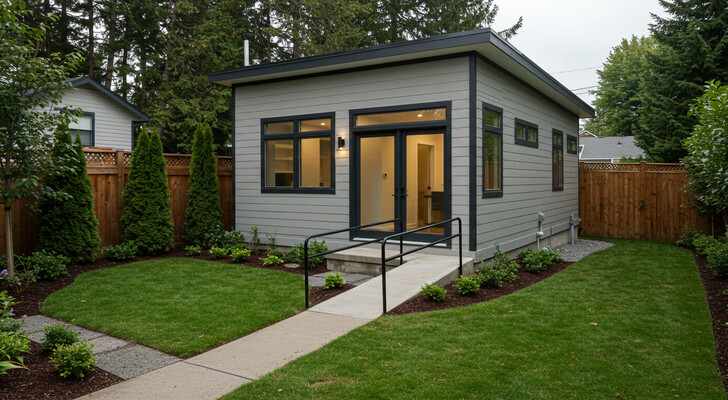As more Americans search for affordable and compassionate solutions to care for aging parents and grandparents, backyard housing options like “granny pods” are gaining attention. These small, independent living units offer a unique way to balance privacy with proximity, allowing elderly family members to live safely and comfortably close to loved ones. In 2025, as housing costs and senior care expenses continue to rise, granny pods are becoming a practical and increasingly popular option for multigenerational families.

What Is a Granny Pod?
For families exploring ways to care for aging parents or grandparents without moving them into assisted living, “granny pods” are gaining popularity in the United States. Officially known as accessory dwelling units (ADUs), these compact, standalone homes can be placed in the backyard of a primary residence. Designed to provide independent living while keeping loved ones close, granny pods are becoming a practical housing solution in 2025 for many American households.
How Granny Pods Work
A granny pod is a small residential structure equipped with essential features such as a bedroom, bathroom, kitchenette, and sometimes even a small living area. These units are typically built on the same property as a main home, allowing elderly residents to live nearby while maintaining a sense of autonomy. Some ADUs are pre-fabricated and delivered move-in ready, while others are custom-built from the ground up.
Cost of Building a Granny Pod in 2025
As of 2025, the cost to install a granny pod varies based on design, size, location, and whether it is prefabricated or custom. On average, families can expect to spend between $90,000 and $180,000. This price generally includes utilities, permits, installation, and construction. While this might seem like a steep investment, many find it a more economical and emotionally rewarding alternative to traditional long-term care facilities, which can cost $50,000 or more annually.
Benefits of ADUs for Elderly Care
One of the key benefits of granny pods is the ability to keep loved ones nearby. This proximity allows families to offer daily support while allowing seniors to retain a degree of independence. In many cases, these homes are equipped with aging-in-place features such as wheelchair-accessible doorways, grab bars, non-slip floors, and even monitoring systems that provide peace of mind for caregivers.
Flexibility and Customization Options
Another advantage is flexibility. ADUs can be used for different purposes over time. If the elderly occupant no longer lives there, the unit can be converted into a guest house, rental property, home office, or even housing for adult children. Customizability also appeals to families who want to tailor the living space to meet specific medical or comfort needs. In 2025, builders and prefab companies offer numerous design options ranging from minimalist modern designs to cozy cottage-style interiors.
Challenges and Considerations
However, granny pods do come with challenges. Zoning laws and building codes can be a barrier depending on your local regulations. Some cities have embraced ADUs as a solution to housing shortages, while others impose strict limitations on size, usage, or even prohibit backyard dwellings entirely. Before beginning construction, it’s crucial to check with your municipality about permits, land use restrictions, and utility connections.
Are Granny Pods Worth It?
The initial investment is another consideration. While it can ultimately save money compared to nursing homes, not all families can afford the upfront costs. Additionally, ongoing maintenance and property tax implications need to be factored in when budgeting for a granny pod.
Conclusion
In conclusion, granny pods offer a thoughtful solution for families who want to keep elderly loved ones close while maintaining their dignity and independence. Though they come with challenges such as zoning hurdles and high initial costs, the long-term emotional and financial benefits often outweigh the downsides. As housing trends evolve in 2025, more American families are choosing to build ADUs as a compassionate and practical answer to elder care.
 © Copyright 2025 Shirabe-ru | Terms | Privacy Policy | Contact Us
© Copyright 2025 Shirabe-ru | Terms | Privacy Policy | Contact Us

